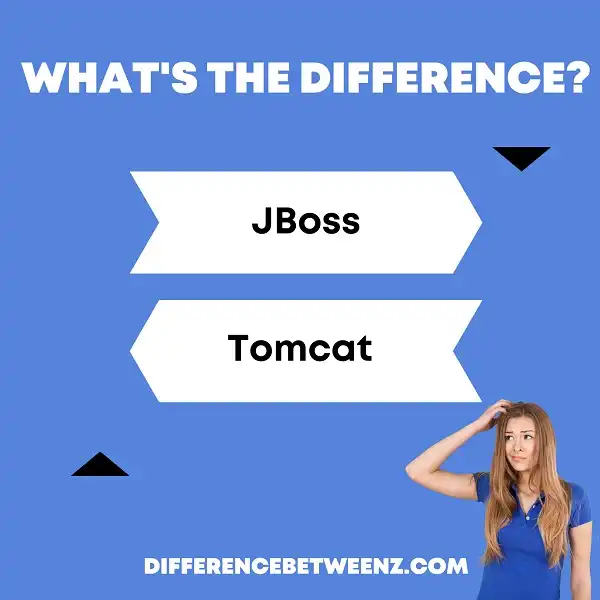Do you know the difference between JBoss and Tomcat? In this blog post, we will compare the two Java application servers and explain some of the key differences. We’ll also provide tips on how to choose the right server for your needs. Stay tuned!
What is JBoss?
JBoss is a Open Source software written in Java that helps to create, deploy and manage Web applications and services. JBoss is an application server that can be used to run enterprise Java applications and services. JBoss is a J2EE application server, providing a platform for developing and deploying enterprise Java applications and services. JBoss is also an web server and support Servlet, JSP technologies. JBoss uses Apache Tomcat as it’s web server.
JBoss provides many features such as Clustering, Load balancing, High Availability, Hot Deployment etc. JBoss is released under the GNU Lesser General Public License. JBoss is developed by Red Hat Inc. JBoss AS 7 is the latest version of JBoss. Jboss EAP 6 is the enterprise version of Jboss AS 7 with long term support from red hat. Jboss EAP 7 (next generation) is currently in beta stage which will be released soon. Jboss has two types of product releases, community versions which are free to download and use and enterprise versions which are paid versions with long term support from red hat.
What is Tomcat?
Tomcat is a server from the Apache Software Foundation that executes Java servlets and renders Web pages that include Java Server Page coding. Tomcat is an open-source project available under the Apache License version 2. Tomcat 7 implements the Servlet 3.0 and JSP 2.2 specifications and includes many additional features that make it a useful platform for developing and deploying web applications and web services. Tomcat can be used as a standalone server for Web applications that use HTML, CSS, JavaScript, and other static content. Tomcat can also be used as a deployment platform for JavaServer Faces, Struts, Spring MVC, and other dynamic content technologies.
Tomcat can be run on multiple operating systems, including Linux, Windows, Solaris, and Mac OS X. Tomcat 7 is compatible with Java EE 6 technologies, such as Servlet 3.0, JSP 2.2, EL 2.2, and Websocket 1.0. Tomcat 7 also supports private deployment of Web applications with the use of Tomcat Realms for security authentication and authorization purposes. Additionally, Tomcat provides a JNDI Resource Factory implementation to allow Tomcat to be used as a resource manager in a JNDI environment.
Difference between JBoss and Tomcat
JBoss and Tomcat are both widely used open-source application servers. JBoss is based on the J2EE platform and includes features such as JNDI, EJB, JTA, JCA, Clustering, etc. Tomcat, on the other hand, is a servlet container and does not support J2EE features. JBoss can be used as a stand-alone application server or integrated with other J2EE servers such as WebLogic or WebSphere. Tomcat can also be used standalone or as part of a larger J2EE server such as WebLogic or WebSphere. JBoss is a certified J2EE server while Tomcat is not. Finally, JBoss has a richer set of management and administration tools than Tomcat.
Conclusion
While both JBoss and Tomcat are servlet containers, they differ in a few key areas. In particular, JBoss is more suited for larger deployments while Tomcat is better for smaller ones. Additionally, JBoss has a more comprehensive set of features while Tomcat is lighter on its feet. Finally, JBoss is generally more expensive than Tomcat.


